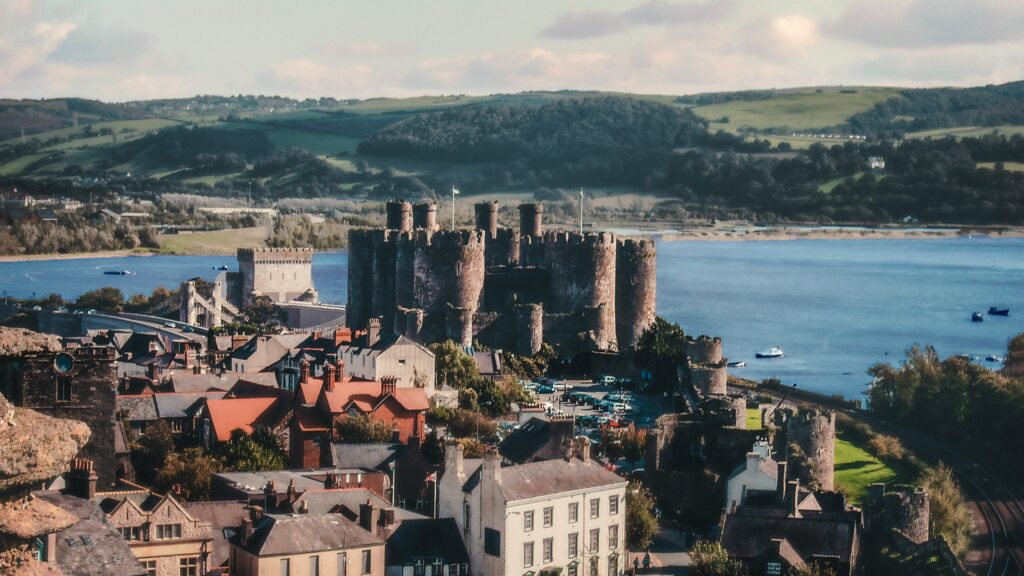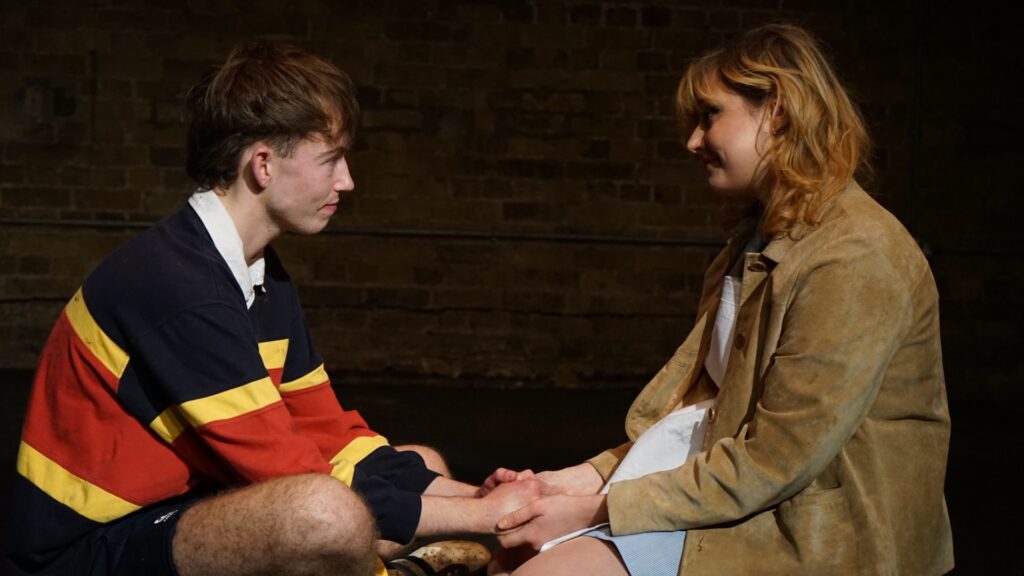Derek Jones raises a question mark over a scheme that aspires to become the eighth wonder of Wales
The proposal to erect Waking the Dragon, a 224ft high sculpture at Chirk Park, where the A5 enters Wales, has, so far, carried all before it. A huge bronze dragon would stand on top of a 130 foot glass tower. Visitors would be invited to climb 206 helicon steps to reach two viewing platforms where they could enjoy spectacular views of the Marches and Shropshire.
In height, the sculpture would far outstrip the Angel of the North, and indeed would be only 100 feet less than the Statue of Liberty. The Chirk dragon’s wingspan would be 187 feet, larger than that of a Boeing 737. At ground level there are plans for a gallery, restaurant, gift shop and gardens celebrating the four branches of the Mabinogion. Simon Wingett, a local art dealer, is progenitor of the project, while the Yorkshire artist, Steve Winterburn, has designed it.
Waking the Dragon is nothing if not ambitious. Simon Wingett hopes it may become the eighth ‘wonder of Wales’, joining Llangollen Bridge, Pistyll Rhaedr, Gresford Church and Wrexham Steeple, among other local sights. Aled Roberts, leader of Wrexham Council, which is currently considering planning permission, has said, more prosaically, that the project “would strengthen further and develop the tourism and heritage available to visitors to North East Wales”.
Roberts was supported by some 80 per cent of voters in an online poll, who thought that the sculpture would ‘benefit’ Wrexham. Despite the fact that last week the borough council deferred approval, while discussions take place about the colour of the beast, it at present seems reasonably certain that the dragon will indeed awaken in the next couple of years, to popular acclaim.
There are those, however, who believe that, far from waking the dragon, he should rapidly be put to sleep. Nick Roe, chair of Wrexham Civic Society, told me, “I’d rather have a piece of cutting edge modern sculpture than the proposed dragon, which looks like an oversized version of something you could buy in a souvenir shop”. Time is short but the current delay provides a last opportunity for concerns to be aired which question the cultural relevance of the piece and go far beyond the returns which the Dragon may make to the local economy.
Ian Roberts, who represents Chirk on Wrexham Borough Council, at least takes us beyond counting the number of visitors: “This icon will really set us apart as a different country with a different culture,” he said. Fair enough, but should we, on this particular spot, on the border between two countries, even hint at the impression that we are enclosed in a world of our own?
The comparison between ‘Waking the Dragon’ and ‘The Angel of the North’ is illuminating, but not, as the Dragon’s publicity boasts, because the Chirk sculpture would be so much bigger. Antony Gormley, designer of the Angel, was first concerned to commemorate the bloody history of the Gateshead coalfield: “below this site coal miners worked for two hundred years”. But a much wider intention was also in his mind – to nurture thought and feeling on themes which concern human beings wherever they live. He hopes the sculpture will help us “grasp hold of the future, expressing our transition from the industrial to the information age, and be a focus for our hopes and fears”.
The Angel of the North’s marriage of local and universal history, and links between the past, the present, and the future is surely one of the main reasons why hundreds of thousands have been moved by the sculpture.
Would ‘Waking the Dragon’, in its present form, have a similar capacity to move us? For Wingett and Winterburn a sense of Welsh difference, is a value to be cherished, and many in Wales will share their passion. But their sights seem mostly to be set on attracting visitors, and they appear to believe that they will do so at least to the same extent as the Angel of the North. Visitors to the Dragon may well be interested in this spectacular display of our mythology, history and culture. They may well have fun in an Eiffel Tower kind of way. But will they be moved? That is an entirely different matter.
Those behind the project want us to be impressed by its size. They even use the word gargantuan, evidently as a term of approval. This is most unfortunate. The adjective is derived from Rabelais’ (1494-1553) stories of Gargantua and Pantagruel. Gargantua, a great giant of a man, is a rich character with many sides to him. However, over time, the word gargantuan has come to refer to characteristics which we would think far from admirable – voracious, inordinate, greedy. The image of a bloated giant comes to mind and Simon Wingett surely would not want the Chirk Dragon to be associated with such an etymology.
On the other hand, perhaps it is expected that we shall be moved by the beauty of an enormous bronze dragon. There is no question that great skill has been employed, but something more than skill is needed for us to declare something beautiful. One hopes for a fresh and original vision. Yet, as Nick Roe infers, the subject of this sculpture is entirely hackneyed and derivative. We should not blame the artist for this – he was obviously working to a brief – but we must question whether his creativity might have been better served.
The Dragon is a piece of representational art, and to that extent it may be popular. But the Angel of the North shows us that greater depth can be achieved when the meaning of ‘representation’ is stretched. The Angel is sculpted in the form of a human figure – it is indeed based on Antony Gormley’s own body – though the face has no individual features. Gormley has said: “The effect of the piece is in the alertness, the awareness of space and the gesture of the wings which are not flat, but about 3.5 degrees forward and give a sense of embrace”. There is good reason to doubt whether the Dragon can carry similar resonance.
This is partly because of the ubiquitous character of dragon imagery in Wales, appearing in many guises from car number plates to the national flag itself – not to mention souvenir shops. In itself, the imagery has great strength. Dragons are fiery, pugnacious, watchful, and not to be trifled with. However, it takes some knowledge of Welsh mythology and history to avoid connections being made with another mythology which, in modern times, has grasped the imagination of generations of people in many parts of the world – that is to say, the imagery of Disneyland.
It was intended that the Chirk Dragon should be bright red – disneyesque indeed – and it is to their credit that Wrexham Council have turned this down, since it might well have reduced the sculpture to the level of kitsch. To be fair, Simon Wingett has seen the force of their objection, promising that the Dragon will not be painted “gimmicky toy town red”. Instead, the artist will aim for a “subtle patinated bronze”.
Those most interested in the tourist potential of Waking the Dragon may dismiss a concern for subtlety and ambiguity as beside the point. People will come to Chirk Park because they want to enjoy a day out, and what’s wrong with that? Nothing at all. However, experience at Gateshead shows that visitors are perfectly capable of enjoying a day out on several levels, even those which may, on the face of it seem obscure. Angels, like dragons, are mythical creatures – they are said to float in the ether – but whether or not they subscribe to Judaeo-Christian traditions and beliefs, people respond warmly to Antony Gormley’s ability to create an air of mystery. As he has suggested, “You make things because they cannot be said”.
Simon Wingett’s motives for putting his energies into the Dragon project are unimpeachable. He wants to raise £8 million for a cancer appeal named after his father, Frank Wingett, who died of the disease in 1988. So 25 per cent of any profits from the tower will go towards helping sufferers in Wales achieve a “better quality of life and dignity while they die”.
To comment critically on the project is to run the risk of seeming not to care about these matters. All power, then, to Simon’s ambitions in this respect – and even to his desire to celebrate Wales. He and his supporters on Wrexham Council may even be right that it will attract thousands of visitors. But if you ask me to judge the tower and the dragon as a work of art (which must surely be Simon Winterburn’s hope) then I must judge it a failure and what help is that to our appreciation of Welsh culture?








At last some wisdom about a most frightful folly that will do no good at all for Wales’s cultural credentials. Wrexham should ponder the fact that the Angel of the North was the culmination of several decades of enlightened commitment to public art by Gateshead Council, and a long process of selection of both artist and concept. Gormley’s Angel was not only the work of a great artist, but the result of serious and thoughtful intent by all concerned, and certainly not the fruit of a misguided populism that seeks to equate impact with mere size. If Wrexham, in this regard, seeks to speak for Wales, Wales has better things to say to the world.
There was a plan recently exposed to plan north east Wales as part of Merseyside Cheshire and fill it up with cheap houses for people from England. A savage attack on the culture and native people of Wales.
A massive blood red dragon should be put up at Chirk and another on the A 550 at Shotwick to stress Wales is another country. These planners and others who want to destroy our identity should be sacked.
woeful
I concur entirely with Geraint’s comment and Derek Jones’s immaculately reasoned conclusion. Art might be in the eye of the beholder but contemporary Welsh culture amounts to more than crude symbolism. I think this proposal highlights our lack of national identity and lack of confidence as a people. No matter how well meaning the projects backers, this monstrosity will do nothing to resolve those issues.
It’s a shame their concern is about making money. Would prefer something a little more organic too (on rock?) with more heart
Derek Jones’ piece is exemplary in its clarity of thought and fairness in argument. There is a massive division in public art in Wales between the best and the worst (a theme I’ll be exploring in a Cardiff Civic Society talk later in the year). This, sadly, falls into the category of the latter. It’s not short on imagination in conceptual terms – big, landmark, visitor destination etc – but as others have already pointed out it fails to deliver on so many levels.
Is Wales as a nation so aesthetically and artistically impoverished that a) there were no Welsh artists capable of the commission, b) no commissioning team capable of seeing beyond the banal and obvious, and c) capable of seeing beyond a “mine is bigger than your’s” mentality?
This is overwhelmingly a sad situation. Many – no doubt well-intentioned (if profit driven?) individuals have pulled together something on a massive scale. Well done.
Now, stand back, drop this ridiculous proposal and plan something that the whole of Wales can contribute to, be proud of, and celebrate. Please don’t add to the public art failures list – especially on such a scale.
PS Our best hope is that public bodies will simply not be able to find any money for it – and it should not receive planning consent either as it stands.
Wales once again embraces its own clichés. On the bright side it could have been a giant miner’s lamp, rugby ball or harp. Build it at your peril, Wrexham Borough Council.
As a Wrexham resident I am not particularly against the idea, but Geraint’s comment highlighting the differences between the Angel of the North being a culmination of Gateshead’s art projects over a number of years is very insightful.